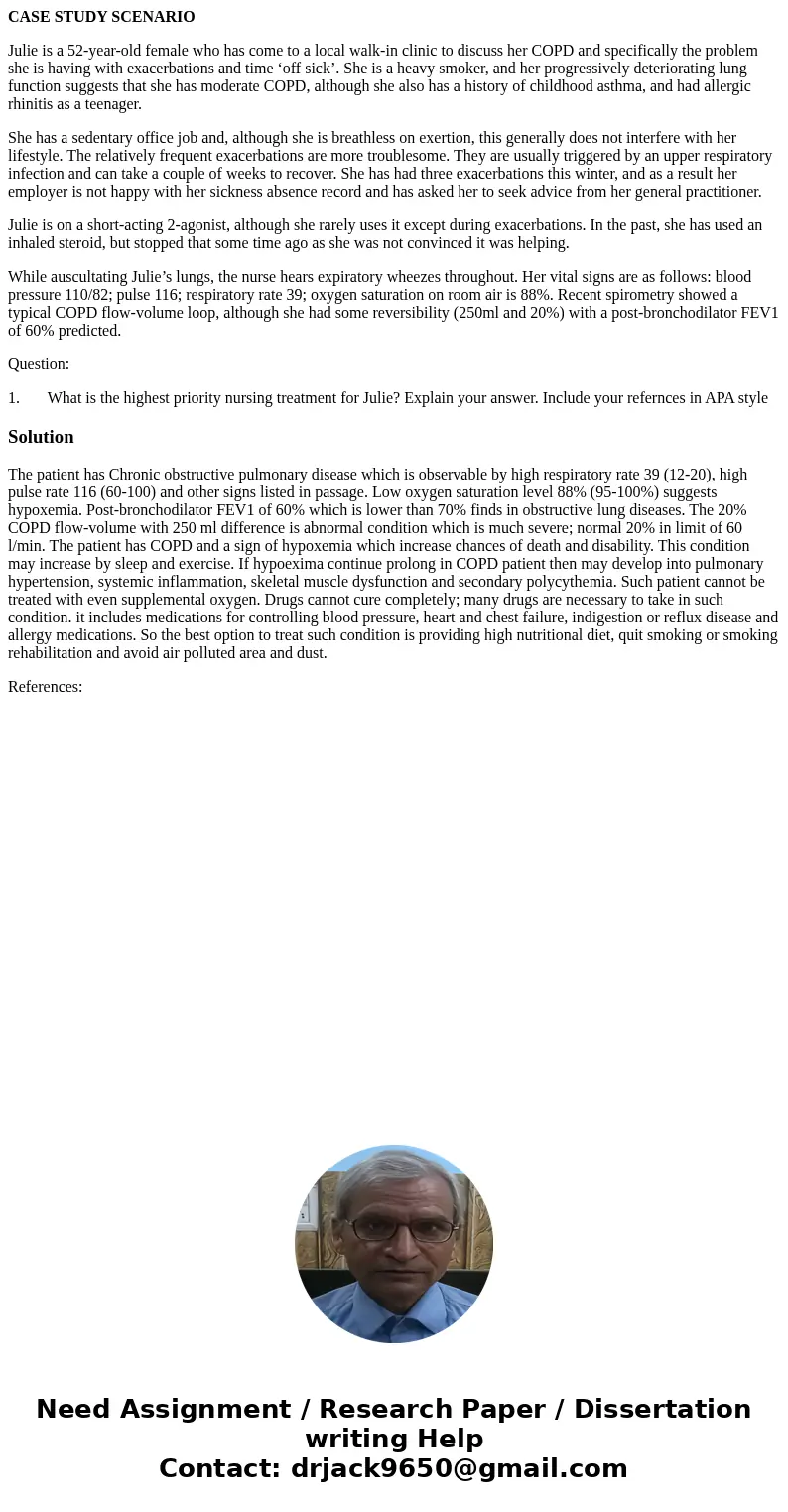CASE STUDY SCENARIO Julie is a 52yearold female who has come
CASE STUDY SCENARIO
Julie is a 52-year-old female who has come to a local walk-in clinic to discuss her COPD and specifically the problem she is having with exacerbations and time ‘off sick’. She is a heavy smoker, and her progressively deteriorating lung function suggests that she has moderate COPD, although she also has a history of childhood asthma, and had allergic rhinitis as a teenager.
She has a sedentary office job and, although she is breathless on exertion, this generally does not interfere with her lifestyle. The relatively frequent exacerbations are more troublesome. They are usually triggered by an upper respiratory infection and can take a couple of weeks to recover. She has had three exacerbations this winter, and as a result her employer is not happy with her sickness absence record and has asked her to seek advice from her general practitioner.
Julie is on a short-acting 2-agonist, although she rarely uses it except during exacerbations. In the past, she has used an inhaled steroid, but stopped that some time ago as she was not convinced it was helping.
While auscultating Julie’s lungs, the nurse hears expiratory wheezes throughout. Her vital signs are as follows: blood pressure 110/82; pulse 116; respiratory rate 39; oxygen saturation on room air is 88%. Recent spirometry showed a typical COPD flow-volume loop, although she had some reversibility (250ml and 20%) with a post-bronchodilator FEV1 of 60% predicted.
Question:
1. What is the highest priority nursing treatment for Julie? Explain your answer. Include your refernces in APA style
Solution
The patient has Chronic obstructive pulmonary disease which is observable by high respiratory rate 39 (12-20), high pulse rate 116 (60-100) and other signs listed in passage. Low oxygen saturation level 88% (95-100%) suggests hypoxemia. Post-bronchodilator FEV1 of 60% which is lower than 70% finds in obstructive lung diseases. The 20% COPD flow-volume with 250 ml difference is abnormal condition which is much severe; normal 20% in limit of 60 l/min. The patient has COPD and a sign of hypoxemia which increase chances of death and disability. This condition may increase by sleep and exercise. If hypoexima continue prolong in COPD patient then may develop into pulmonary hypertension, systemic inflammation, skeletal muscle dysfunction and secondary polycythemia. Such patient cannot be treated with even supplemental oxygen. Drugs cannot cure completely; many drugs are necessary to take in such condition. it includes medications for controlling blood pressure, heart and chest failure, indigestion or reflux disease and allergy medications. So the best option to treat such condition is providing high nutritional diet, quit smoking or smoking rehabilitation and avoid air polluted area and dust.
References:

 Homework Sourse
Homework Sourse